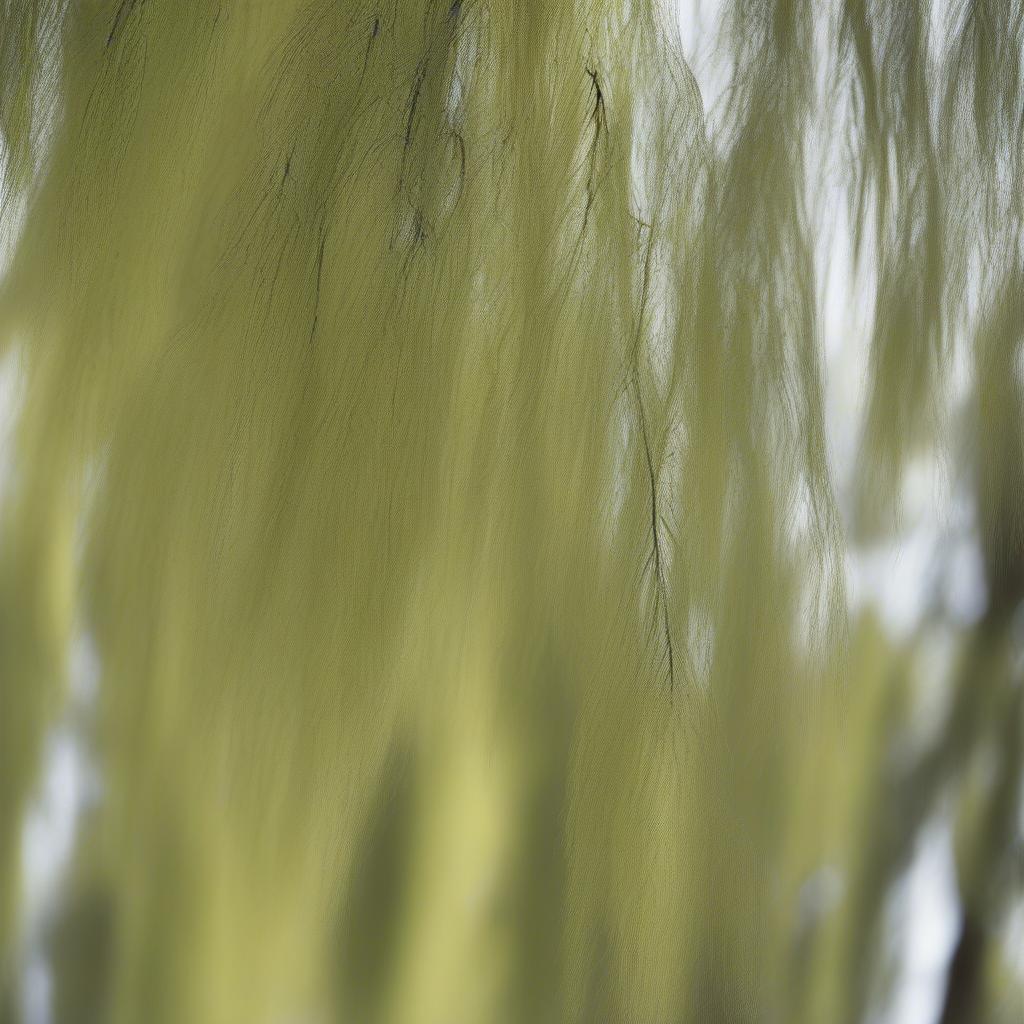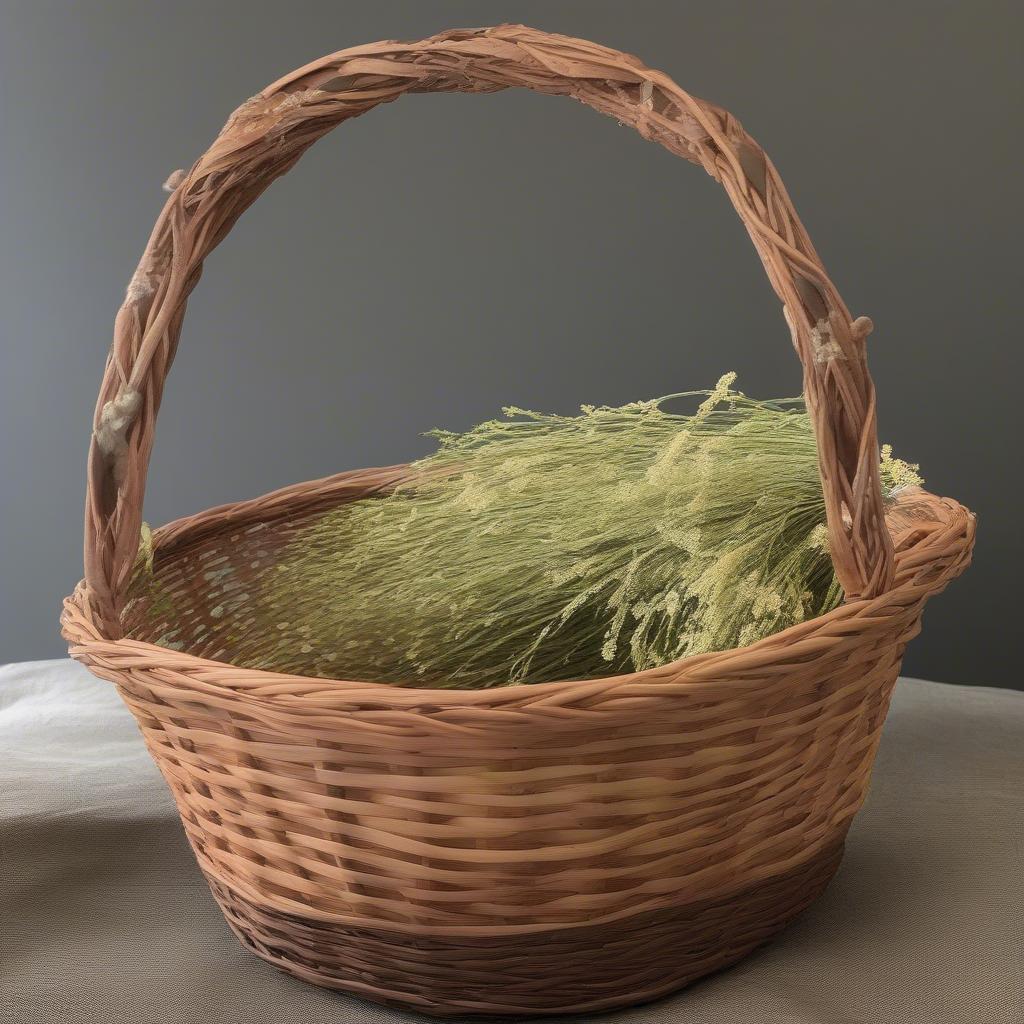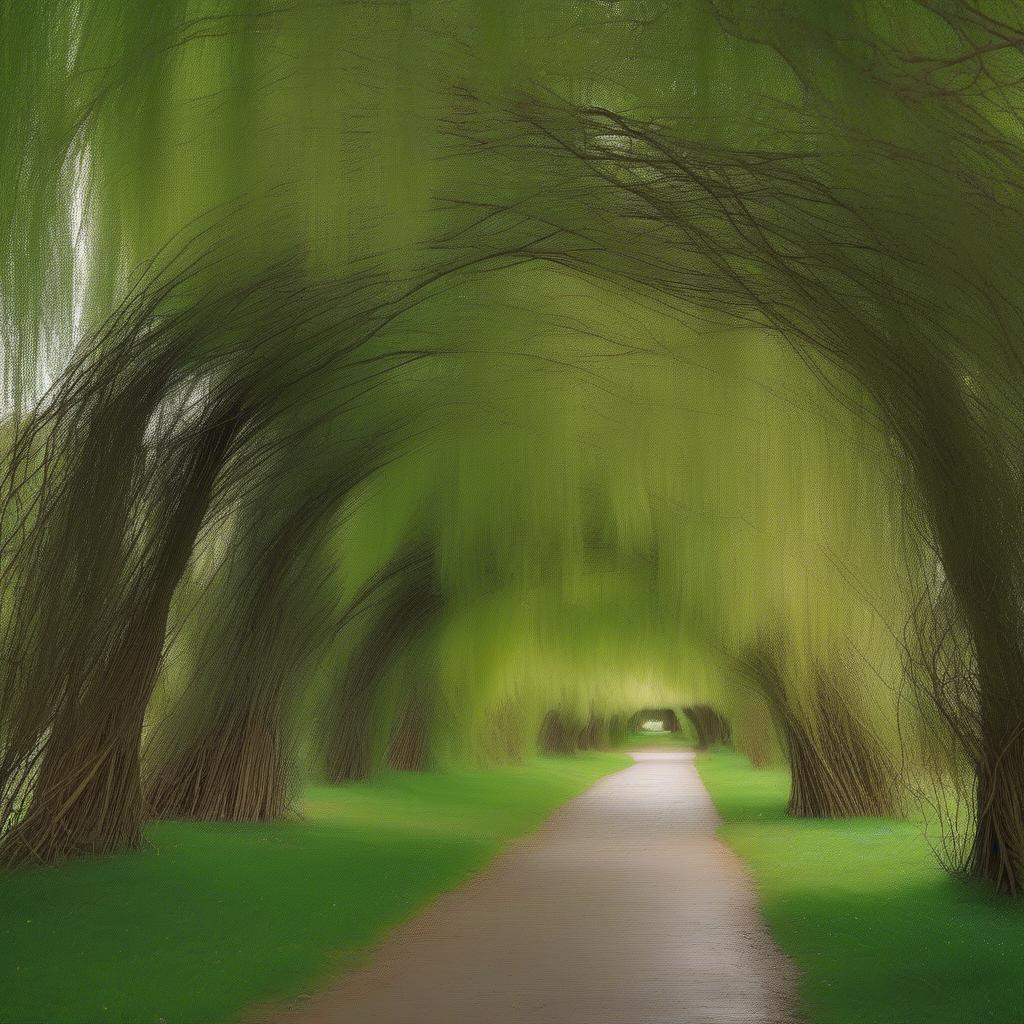Basket Weaving
Can You Use Weeping Willow for Basket Weaving?
Can You Use Weeping Willow For Basket Weaving? The answer isn’t a simple yes or no. While weeping willow’s graceful, drooping branches might evoke images of picturesque woven baskets, its suitability for basketry is a bit more complex than other willow varieties. Let’s delve into the world of willow basket weaving and explore the potential, and challenges, of using weeping willow.
Understanding Willow for Basketry
Willow, with its flexible and strong branches, has been a staple in basket weaving for centuries. Different willow varieties offer unique properties, influencing the final product’s strength, flexibility, and appearance. Knowing which willow is best suited for your project is crucial. While many willow varieties are ideal for basketry, weeping willow presents some unique challenges.  Close up of weeping willow branches showing their flexibility and texture.
Close up of weeping willow branches showing their flexibility and texture.
Why Weeping Willow Isn’t Ideal
The very characteristic that gives weeping willow its name—its drooping, flexible branches—is also what makes it less than ideal for basket weaving. These branches, while pliable, lack the strength and rigidity required for a durable basket structure. They tend to be brittle and prone to snapping, especially when dried. Additionally, the bark of the weeping willow is thinner and less resilient than other basket weaving willows, making it more susceptible to damage during the weaving process.
Alternative Willow Varieties for Basket Weaving
For successful basket weaving, consider these excellent willow varieties:
- White Willow (Salix alba): Known for its strong, flexible rods, perfect for beginners.
- Purple Willow (Salix purpurea): Offers slender, flexible rods ideal for intricate weaving.
- Dogwood (Cornus spp.): A non-willow option known for its strength and vibrant red bark.
willow tree for basket weaving offers detailed information on choosing the best willow for your needs.
Exploring Weeping Willow’s Potential
While using weeping willow as the primary material for a functional basket is generally discouraged, there are some creative ways to incorporate it into your projects. Its long, flowing branches can be used for decorative elements, adding a unique touch to your baskets.
Decorative Accents and Embellishments
Consider using weeping willow branches for:
- Wrappings: Wrap weeping willow around basket handles or rims for a touch of natural elegance.
- Accent Weaving: Incorporate small amounts of weeping willow into the weaving pattern for visual interest.
- Sculptural Elements: Use weeping willow to create decorative loops, swirls, or other artistic elements on your basket.
 A woven basket decorated with weeping willow branches.
A woven basket decorated with weeping willow branches.
“Weeping willow, while not ideal for structural basketry, offers a unique aesthetic element that can elevate your designs,” explains renowned basket weaver, Sarah Miller, of the Willow and Reed Studio.
Preparing Weeping Willow for Weaving (If You Dare)
If you’re determined to try weaving with weeping willow, understand that it requires extra care and preparation. Harvest the branches in late winter or early spring when the sap is flowing. Soak the rods for an extended period to increase their pliability and reduce brittleness. Work with them gently, and be prepared for some breakage.
Other Uses for Weeping Willow
While not ideal for traditional basket weaving, weeping willow has other uses:
- Living Willow Structures: Create stunning living willow tunnels, fences, or sculptures in your garden.
- Craft Projects: Use the flexible branches for other craft projects like wreaths, decorative ornaments, or even furniture making.
 A living willow tunnel in a garden.
A living willow tunnel in a garden.
Can Weeping Willow Be Used For Basket Weaving: A Recap
Weeping willow is not the optimal choice for basket weaving due to its brittleness and lack of structural integrity. However, weeping willow basket weaving can offer unique decorative elements. Choosing a more suitable willow variety will ensure a durable and beautiful basket.
FAQ
- What is the best willow for basket weaving? White willow and purple willow are excellent choices.
- Where can I buy willow for basket weaving? Specialty craft stores or online retailers often carry basket weaving supplies.
- How do I prepare willow for weaving? Soak the rods in water until they are pliable.
- Is weeping willow toxic? No, weeping willow is not toxic, but it’s not ideal for basket weaving.
- Can I use other materials for basket weaving? Yes, materials like reed, cane, and even recycled materials can be used.
- What tools do I need for basket weaving? A sharp knife, secateurs, and a bodkin are essential tools.
- How long does it take to weave a basket? The time varies depending on the size and complexity of the basket.
If you’re in Hanoi, Vietnam or Tech Avenue, Suite 12, San Francisco, CA 94105, USA, please reach out! We have a 24/7 customer support team available to answer any questions.
